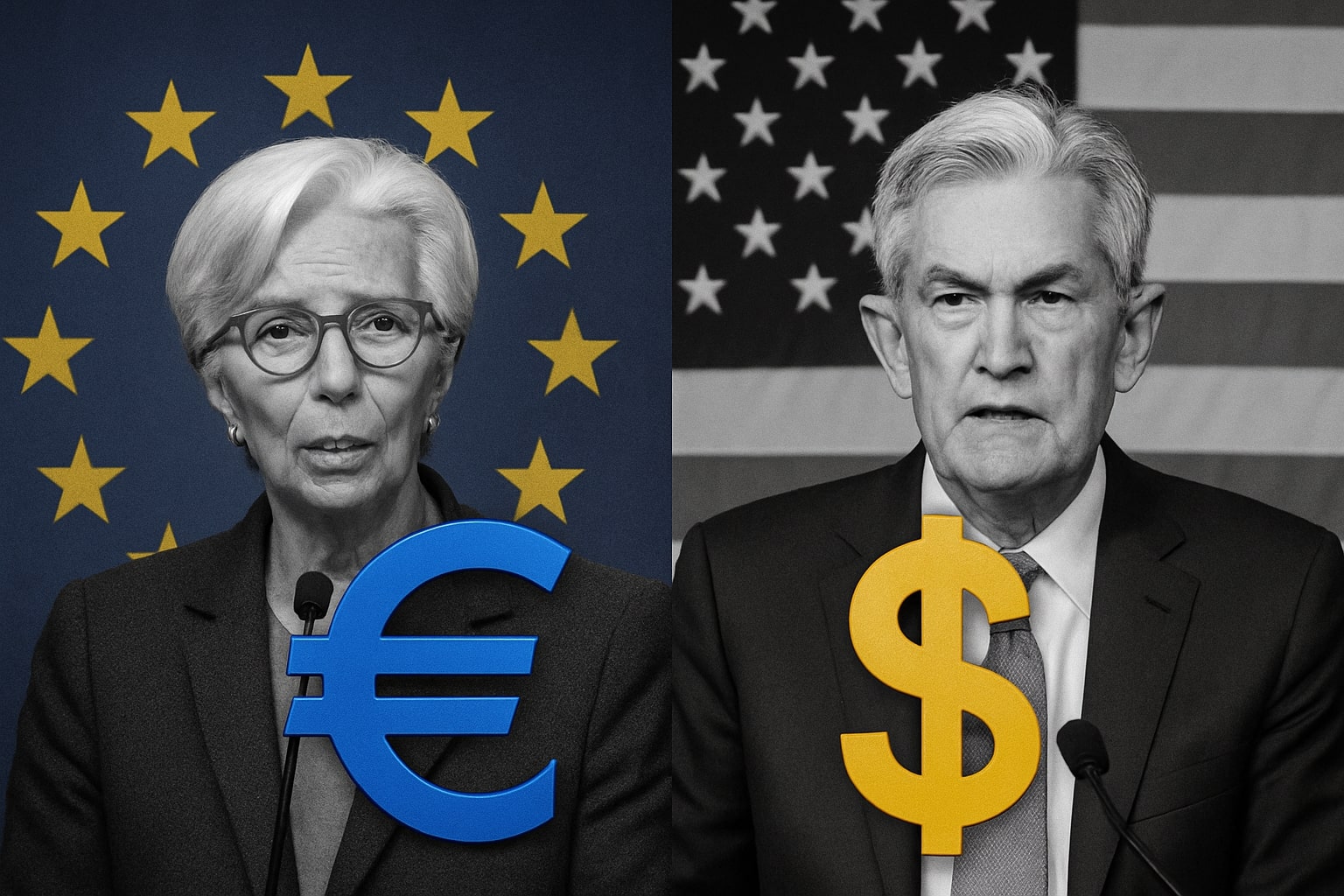
USD/JPY Price Forecast - Holds 156.38 as BoJ Silence and U.S. Yield Advantage Fuel Renewed Dollar Strength
With the yen sliding and U.S. 10-year yields steady at 3.91%, the USD/JPY pair eyes a breakout above 156.80 | That's TradingNEWS
USD/JPY Extends Gains Toward 156.50 As Tokyo Stays Silent and U.S. Yields Anchor the Dollar’s Dominance
The USD/JPY pair continues its steady climb, trading around 156.38, maintaining its upward bias as the Bank of Japan avoids intervention despite persistent yen weakness. The pair has advanced more than 2.4% in November, reflecting widening rate differentials between the Federal Reserve and the Bank of Japan, and renewed carry-trade flows as global investors borrow yen to fund higher-yielding U.S. assets.
Yen Under Pressure as Japan’s Fiscal Expansion Fuels Weakness
The recent election of Prime Minister Sanae Takaichi triggered sharp market reactions, erasing $127 billion in Tokyo-listed equity value within a week and extending declines in both the yen and Japanese government bonds. Takaichi’s fiscal agenda — Japan’s largest supplementary spending plan since the pandemic — has raised fears of unchecked public debt expansion. Investors view it as inflationary in the medium term but structurally bearish for the yen, as the Bank of Japan is now less likely to tighten policy. While Japanese consumers may welcome short-term relief, the policy imbalance further pressures the JPY, amplifying the dominance of the U.S. dollar across Asia.
Carry Trade Mechanics Reinforce USD/JPY Momentum
The yen’s role as the funding currency for global risk positions remains central to this rally. With Japanese short-term rates effectively anchored near zero, hedge funds continue to borrow yen and reinvest in higher-yielding U.S. assets. The return on 10-year U.S. Treasuries hovering near 3.91% makes the yield differential a compelling reason for capital outflows. As these trades multiply, the USD/JPY pair strengthens through continuous JPY selling. However, the same structure creates systemic risk: when carry positions unwind, reversals can be violent. Last year’s July 11 intervention, which coincided with a weak U.S. CPI print, caused a rapid yen rebound from 160.00 to 140.00, triggering deleveraging across global equity markets. The Ministry of Finance has so far remained quiet this quarter, suggesting reluctance to repeat that episode.
U.S. Dollar Index (DXY) Holds Firm as Support Levels Define the Macro Context
The broader dollar remains resilient, with the DXY trading near 100.22, up from its October lows of 98.98, a level representing the 61.8% Fibonacci retracement of the 2021–2022 rally. That base sparked a new upward sequence, forming a cup-and-handle pattern on the daily chart, which supports continued USD strength across major pairs. Despite dovish expectations from the Federal Reserve — with fed-funds futures pricing a 71% chance of a 25-basis-point cut in December — dollar demand persists due to weaker foreign yields and risk-off sentiment tied to geopolitical uncertainty.
Key Technical Landscape for USD/JPY and Risk of Intervention Thresholds
The USD/JPY technical structure remains bullish as long as the pair trades above 153.20, with the 155.00–155.50 area acting as a consolidation base. The 154.45 zone aligns with prior resistance turned support, giving traders a defined line for positioning. Immediate resistance appears near 156.80, followed by the critical 160.00 handle, where the previous intervention took place. A daily close above that threshold could invite fresh verbal warnings from Tokyo but would also confirm an extended bullish continuation pattern. Short-term momentum indicators remain strong, with RSI near 68, reflecting sustained buying pressure but signaling proximity to overbought territory.
Japan’s Bond Market Stability and BoJ Policy Outlook
The Bank of Japan continues yield-curve control operations, with the 10-year JGB yield capped near 0.98%, a level that maintains ultra-low borrowing costs for corporates but deepens yen weakness. Market participants expect no major policy shift before Q2 2026, as core inflation remains stable around 2.1%, below the BoJ’s comfort zone for sustained tightening. The central bank’s priority remains maintaining liquidity and avoiding a shock to long-duration government bonds. However, that dovish stance widens the monetary gap with the Fed, which, despite potential cuts, still holds benchmark rates at 5.25–5.50%, sustaining a spread of over 450 basis points — the primary structural driver behind USD/JPY’s strength.
Global Risk Flows and Equity Market Reactions to the Yen Decline
The yen’s persistent weakness has spillover effects across equity markets. The Nikkei 225 has declined nearly 4.8% this week amid concerns that foreign investors may start repatriating profits. Meanwhile, U.S. tech equities remain sensitive to carry-trade unwinds; July’s volatility episode saw the VIX reach its third-highest level historically. This time, volatility remains contained, with VIX below 15, suggesting market participants trust Japan’s passive stance. However, any abrupt JPY strengthening could still disrupt leveraged portfolios, particularly those using yen-denominated swaps.
U.S. Macro Data and Fed Positioning Shape the Dollar Side
The U.S. economy continues to show resilience. Despite slower job growth — 119,000 new jobs in September and unemployment at 4.4% — the data indicates stability rather than weakness. Inflation expectations have softened, and New York Fed President John Williams recently signaled that current monetary policy remains “modestly restrictive,” opening the door for a policy recalibration. However, mixed signals from other Fed officials such as Susan Collins and Lorie Logan, who warned against excessive easing, kept yields supported. These dynamics underpin USD/JPY above 155, as traders price in a gradual rather than abrupt U.S. easing path.
European and Cross-Currency Context Reinforces Yen Weakness
Across the Atlantic, EUR/USD struggles near 1.1515, reflecting muted demand for the euro as the ECB faces its own slowdown, with Germany’s PMI contracting to 52.4 and inflation trending lower. The euro’s weakness contributes indirectly to yen depreciation, as cross-currency flows into the dollar remain elevated. The euro’s inability to recover above 1.1650 keeps the dollar bid, amplifying upward momentum for USD/JPY. Meanwhile, the GBP/USD pair remains steady around 1.3097, suggesting that broad dollar demand remains diversified, not limited to the yen cross.
Risk Sentiment and Safe-Haven Paradox in the Yen’s Decline
Traditionally considered a safe haven, the yen’s erosion in this cycle reflects a structural shift in global risk preferences. The rise of U.S. Treasury yields and continued demand for dollar liquidity has diminished the yen’s historical defensive status. Even during mild equity corrections, USD/JPY often holds firm or even rises — a direct result of Japan’s negative real yields and the global expansion of carry trades. Traders now treat yen weakness as a macro feature rather than an anomaly, embedding it into forward hedging strategies across Asian markets
Read More
-
PFFA ETF (NYSEARCA:PFFA) Holds $21.20 as 9.61% Yield Strengthens Its Position as a Top Income ETF
22.11.2025 · TradingNEWS ArchiveStocks
-
XRP ETFs Defy Crypto Sell-Off With $410M Inflows as XRP Falls to $1.93 Amid Whale Dump
22.11.2025 · TradingNEWS ArchiveCrypto
-
Natural Gas Price (NG=F) Prices Surge Toward $5.00 as U.S. Cold Snap and Rising LNG Exports Tighten Supply
22.11.2025 · TradingNEWS ArchiveCommodities
-
GBP/USD Price Forecast - Pound Holds 1.3102 as U.K. Fiscal Confidence and Fed Division Keep Sterling Firm
22.11.2025 · TradingNEWS ArchiveForex
Forecast, Technical Projections, and Price Targets
The next key test for USD/JPY lies at 156.80, where a breakout could target 158.40, followed by the 160.00 psychological barrier. Should Tokyo intervene near that level, downside risk would open toward 154.45 and 153.20, both representing previous structural supports. Momentum traders continue to accumulate positions above 155.00, as algorithmic models maintain buy signals. If the pair sustains above the 20-day moving average near 155.50, the long-term projection favors an extension to 162.00 in Q1 2026. Conversely, a confirmed daily close below 153.00 would indicate a medium-term trend reversal.
Trading News Verdict — BUY (Bullish Bias Above 154.45, Target 158.40–162.00)
With the USD/JPY pair sustaining momentum above 155.00, strong U.S. yields, passive BoJ policy, and an expanding carry-trade base keep the structure bullish. Unless the Ministry of Finance signals imminent intervention, the pair remains positioned for another test of 160.00, with upside potential toward 162.00 as global rate spreads and liquidity imbalances continue to favor the dollar.



















